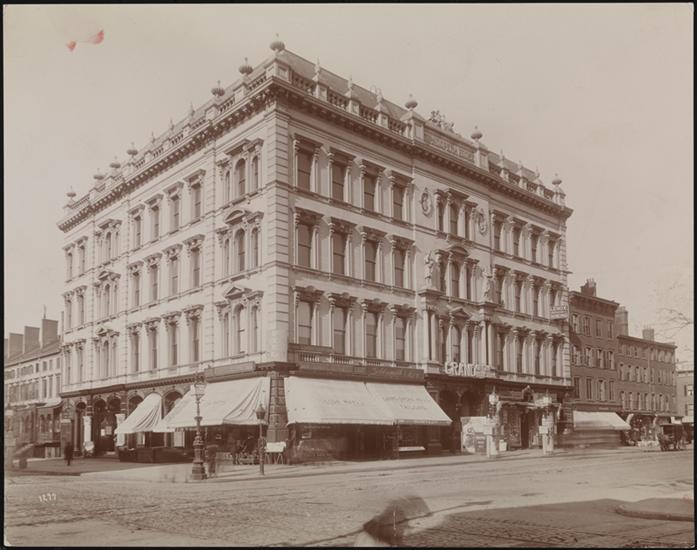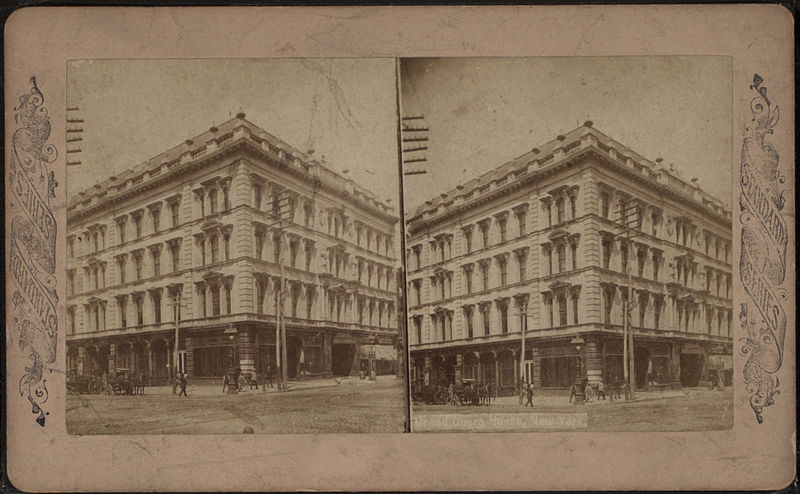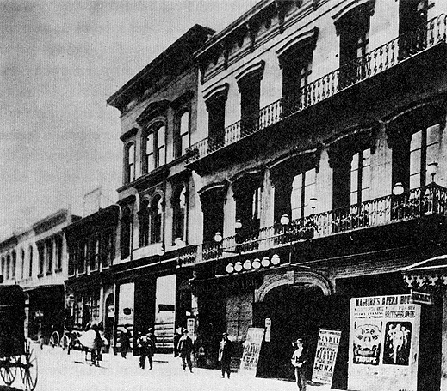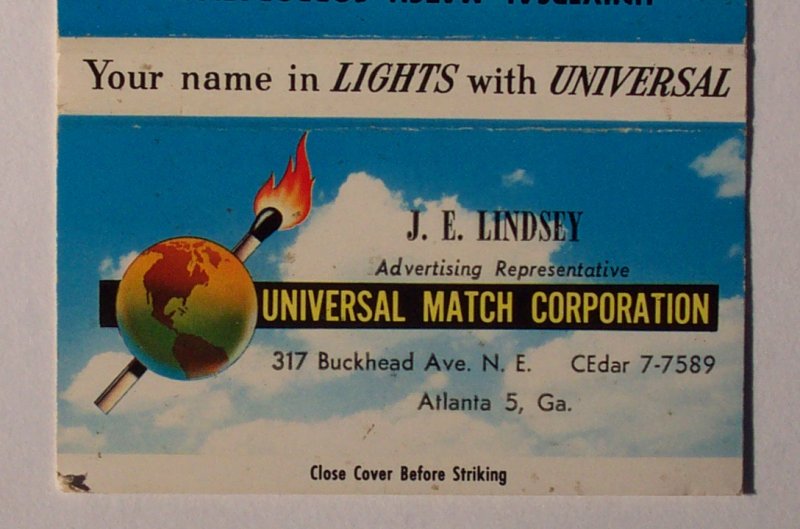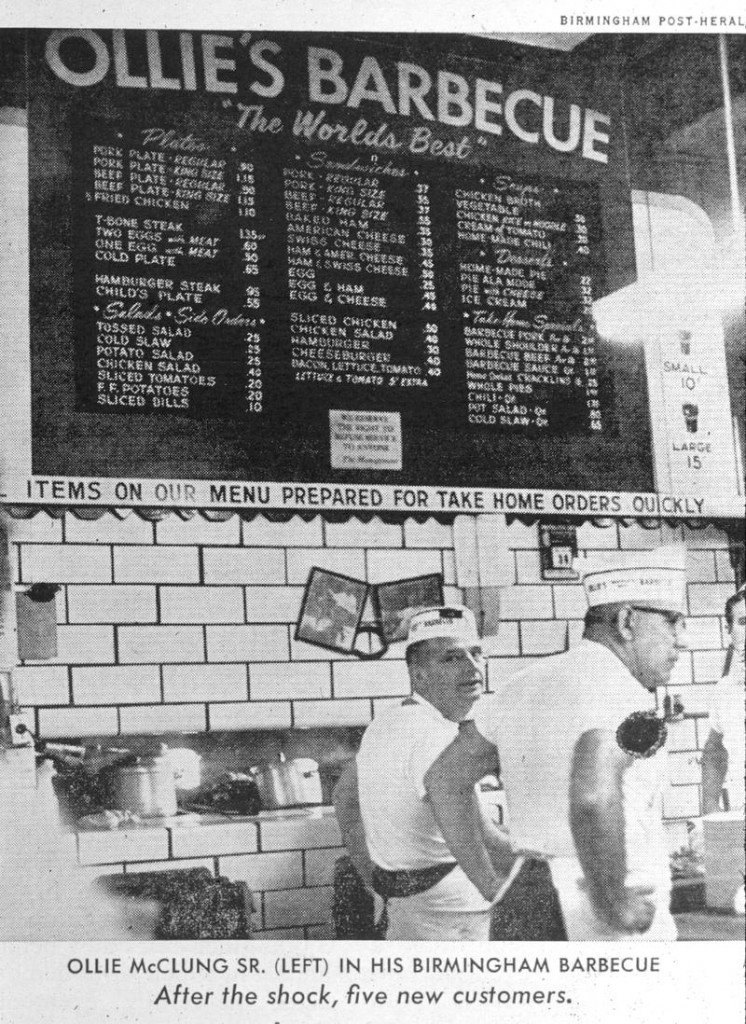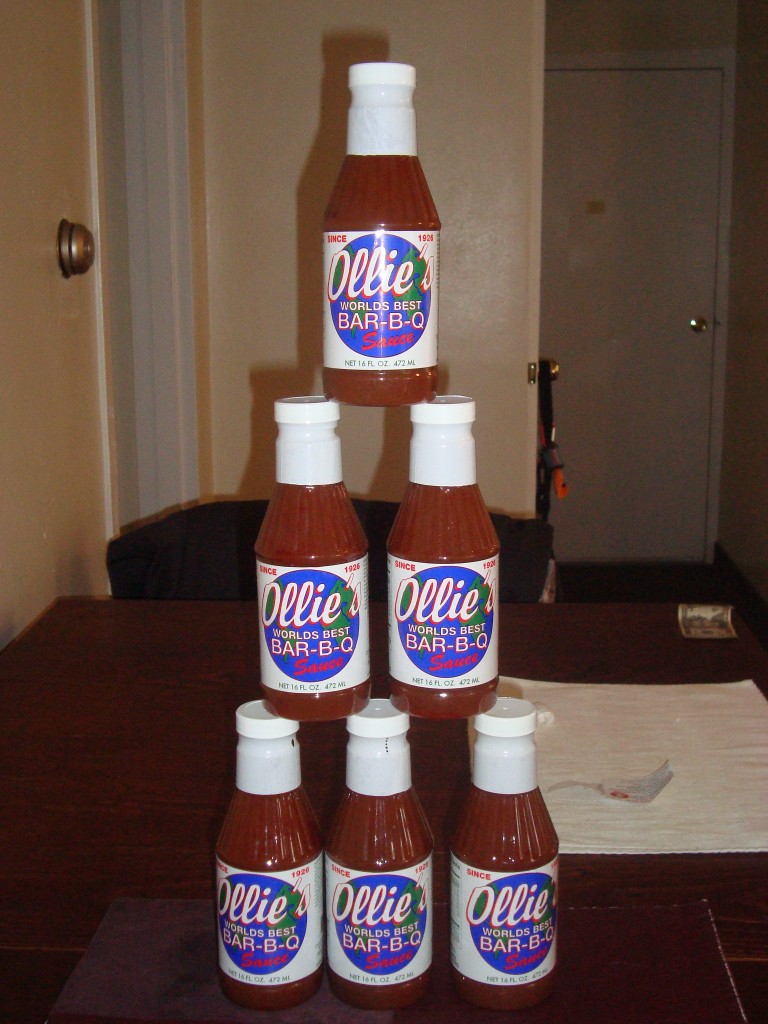I’m hoping someone can help me track this down. It seems the Supreme Court issued an opinion in 1929 finding that a certification of a question from the Court of Claims was invalid, because resolving it would unconstitutionally expand the Supreme Court’s original jurisdiction. AND THE COURT WITHDREW THE OPINION. This actually happened. The opinion is nowhere to be found in the U.S. Reports. Though I’ve found a few clues.
First, at 279 U.S. 826 (June 3, 1929), we see per curiam opinion withdrawing the opinion, and restoring the case to the docket:
Restored to docket June 3, 1929.
It is now here ordered by this court that these cases be and they are hereby restored to the docket for reconsideration, and that the judgments heretofore entered herein be and they are hereby revoked and set aside, and that the opinion announced in these cases on Monday, May 27, last, be and it is hereby ordered to be withdrawn.
And withdrawn it was. Absolutely gone.
Second, Felix Frankfurter and James Landis wrote in the Harvard Law Review (43 Harv. L. Rev. 33, 1929) about two cases not disposed of during the 1928 term (out of 238):
Exclusive of two cases, Wheeler Lumber Bridge & Supply Co. v. United States, and Indian Motorcycle Co. v. United States, in which an opinion of dismissal was rendered by the Chief Justice on May 27, 1929 (see U. S. Daily, May 31,1929, at 776), but withdrawn a week later on June 3, 1929 when the cases were restored to the docket for reconsideration. (1929) SUP. CT. J. 302, 314-15.
That would have been Chief Justice Taft. Taft stepped down as Chief Justice on February 3, 1930. On February 13, 1930 (about 2 months before the case was decided), Charles Evan Hughes was confirmed as Chief Justice.
Does anyone know where to obtain “U. S. Daily, May 31,1929, at 776”?
The following term, on May 26, 1930 (281 U.S. 572) the Court issued a new opinion in the case by Justice Van Devanter. So the authorship changed.
The Court of Claims has certified to us a question concerning which it desires instruction for the proper disposition of the above entitled cause now pending before it. Late in the last term we dismissed the certificate in the belief that the question propounded embraces the whole case, and so could not be answered consistently with the applicable statute or with the constitutional limitations on our jurisdiction. But before the term closed we vacated the order of dismissal (279 U. S. 826, 49 S. Ct. 515, 73 L. Ed. 978) and held the matter for further consideration.
Fourth, Frankfurter and Landis returned to this topic in the following year’s Harvard Law Review, noting how the Court resolved the issue:
Petitions for certiorari the Court can deny, but questions certified must be answered. The Court therefore must protect itself against abuse of certification. The close attention *36 which the Court gives to certificates, lest issues of fact be concealed in questions of law, is illustrated by Wheeler Lumber Co. v. United States.62 In this case the Court of Claims for the first time employed the power given it by the Act of 1925, of certifying questions to the Supreme Court. During the 1928 term the Court refused to give answer, holding that the certificate required the Court to decide the entire case, and thus sought to compel an exercise of original jurisdiction in excess of its constitutional powers.63 Upon further consideration this opinion was withdrawn because the underlying conception was found too narrow. At the last term the Court held that although the certificate in question was long and complicated, it presented a “distinct and definite” question of law.64 The history of this litigation in the Supreme Court indicates its hostility to a procedure by which the Court may be called upon to make rulings without the benefit of a decision below.
63 The opinion that was later withdrawn is not published in the official reports, but can be found in U. S. Daily, May 31,1929, at 776.
There we have it. The Supreme Court issued an opinion about it’s original jurisdiction on May 27, 1929, but withdrew it on June 3, 1929. How does this happen?
So what happened, I think that the emphasized portion in the modified relates to Frankfurter and Landis’s comment–the Court of Claims tried to get the Court to resolve not just an issue of law, but issues of fact. I suspect the Court objected to an expansion of its original jurisdiction for finding questions of fact, and not just law, in a case not yet resolved (the court of claims was a court of first instance). After all, the “supreme Court shall have appellate Jurisdiction, both as to Law and Fact.” But deciding questions of facts in the first instance would be outside the Court’s original jurisdiction, and under Marbury, unconstitutionally expanding it’s original jurisdiction. That’s my theory. As the Court said in Adams, Cunningham & Co. v. Jones, 37 U.S. (12 Peters) 207, 213 (1838) (“[T]o express an opinion upon the whole facts of the case, instead of particular points of law growing out of the same; [is] a practice which is not deemed by the majority of the Court to be correct, under the act of congress on this subject.”). See also:
In applying these revisions to the facts in Seale, the Court would have been hard-pressed to dismiss the certified question at issue in the case.136 These revisions, therefore, not only respond to those instances in which the Court has incorrectly dismissed a flawless certificate, they also help to merge into one authoritative source the restrictions that the Court has imposed on certification. If Congress no longer believes that certification has value as a federal appellate mechanism, it must repeal it so that the circuit courts no longer rely on it.137 If, however, certification still offers some benefits,138 the Court must revise and reevaluate its approach in reviewing *2049 certificates. Only then can these benefits be realized. Otherwise, certification will remain an appellate mechanism with little meaning and substance.
Kevin G. Crennan, The Viability of Certification in Federal Appellate Procedure, 52 Wm. & Mary L. Rev. 2025, 2048-49 (2011)
There is also some dicta to this effect in Justice Van Devanter’s 1930 opinion.
There are two reasons why a certification by that court which embraces the whole case cannot be entertained by this Court. One is that to accept such a certification and proceed to a determination thereon, in advance of a decision by that Court, would be an exercise of original jurisdiction by this Court contrary to the constitutional provision which prescribes that its jurisdiction shall be appellate in all cases other than those affecting ambassadors, other public ministers and consuls, and those in which a State shall be a party. Article 3, s 2, cl. 2. The other is that the statute permits a certification only of ‘definite and distinct questions of law.’
…
But in exercising that jurisdiction this Court uniformly ruled that it could not entertain the certifications unless they were of distinct questions of law and not of the whole case, for otherwise it would be assuming original jurisdiction withheld from it by the Constitution.
This theory is somewhat buttressed by Taft’s opinion in Old Colony Trust Co. v. Commissioner of Internal Revenue, 279 U.S. 716 (1929). This case was decided on June 3, 1929, the same day Wheeler was withdrawn! In this opinion, Taft held that the certification process was within the Court’s appellate jurisdiction:
The jurisdiction here is based upon the certificate of a question of law. That is whether the payment by the employer of the income taxes assessed against the employee constitutes additional returnable taxable income to such employee. The certification **504 of such a question by the Circuit Court of Appeals is an invocation *729 of the appellate jurisdiction of this Court and therefore within the Constitution.
It would make sense that once facts are involved, we are no longer in the Court’s appellate jurisdiction, but in the Court’s original jurisdiction, and we have a Marbury problem. That Wheeler was withdrawn the same day Old Colony was decided makes me think I’m on the right track.
For even more evidence, I found an article that cites testimony from Taft and Van Devanter (the two authors of the Wheeler case) on their thoughts on the certification process!
Certification also played a significant role in the passage of the Judges’ Bill. As Professor Hartnett’s work on that legislation summarizes: “In the hearings on the Judges’ Bill, it was repeatedly noted that the Supreme Court would not alone control its jurisdiction, but that the courts of appeals, by use of certification, would share in that control.” *1324 78 So, for example, Chief Justice Taft told Congress that certification would serve as a means pursuant to which the courts of appeals could exercise their own “discretion” to “place” particular legal issues before the Supreme Court.79 And Justice Van Devanter, in the final testimony on the bill prior to its passage, highlighted that the bill allowed the circuit courts “[w]henever they are so disposed” to certify “important questions of law” to the Supreme Court.80 The understanding that emerged in the wake of the Judges’ Bill, reflected in Frankfurter and Landis’s 1930 Harvard Law Review foreword, was that “[p]etitions for certiorari the Court can deny, but questions certified must be answered.”81
Amanda L. Tyler, Setting the Supreme Court’s Agenda: Is There A Place for Certification?, 78 Geo. Wash. L. Rev. 1310, 1323-24 (2010)
Did you know that Circuit Court of Appeals can certify a question directly to the Supreme Court. This is an alternate path to certiorari.
It is still on the books, but I don’t think it is ever relied on, at 28 U.S.C. 1254(2).
Cases in the courts of appeals may be reviewed by the Supreme Court by the following methods:
(1) By writ of certiorari granted upon the petition of any party to any civil or criminal case, before or after rendition of judgment or decree;
(2) By certification at any time by a court of appeals of any question of law in any civil or criminal case as to which instructions are desired, and upon such certification the Supreme Court may give binding instructions or require the entire record to be sent up for decision of the entire matter in controversy.
Supreme Court Rule also discusses certification:
A United States court of appeals may certify to this Court a question or proposition of law on which it seeks instruction for the proper decision of a case…. Only questions or propositions of law may be certified….” Sup. Ct. R. 19(1).
The Court has held in the past, perhaps begrudgingly, that the certification process, unlike the certiorari process, is mandatory.
Notwithstanding the current phrasing of the statute and Rule in terms that easily could be read as permissive rather than mandatory, “[i]n form and history, this certified question jurisdiction is mandatory.” 17 Charles Alan Wright et al., Federal Practice & Procedure § 4038, at 62-64 & nn.2, 10 (3d ed. 2006); see also Wheeler Lumber Bridge & Supply Co. v. United States, 281 U.S. 572, 577-78 (1930) (Van Devanter, J.) (describing certification jurisdiction as mandatory); cf. Old Colony Trust Co. v. Comm’r, 279 U.S. 716, 728-29 (1929) (Taft, C.J.) (describing certification as “an invocation of the [Court’s] appellate jurisdiction”).
Amanda L. Tyler, Setting the Supreme Court’s Agenda: Is There A Place for Certification?, 78 Geo. Wash. L. Rev. 1310, 1328 (2010)
In 2009, the Supreme Court dismissed a certified question from the 5th Circuit in United States v. Seale. The 5th Circuit split en banc. Justice Stevens, joined by Justice Scalia, issued a statement respecting the dismissal of the certified question.
This certificate presents us with a pure question of law that may well determine the outcome of a number of cases of ugly racial violence remaining from the 1960s.
Yet I see no benefit and significant cost to postponing the question’s resolution. A prompt answer from this Court will expedite the termination of this litigation and determine whether other similar cases may be prosecuted. In these unusual circumstances, certification can serve the interests not only of legal clarity but also of prosecutorial economy and “the proper administration and expedition of judicial business.”
Ibid.
The certification process has all but disappeared in recent decades. The Court has accepted only a handful of certified cases since the 1940s and none since 1981; it is a newsworthy event these days when a lower court even tries for certification.
Section 1254(2)and this Court’s Rule 19 remain part of our law because the certification process serves a valuable, if limited, function. We ought to avail ourselves of it in an appropriate case. In my judgment, this case should be briefed and set for argument.
These kinds of Supreme Court mysteries are invigorating!
